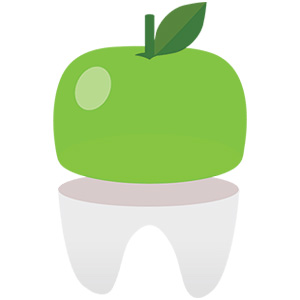You’re ready to straighten your teeth, and you’re wondering how to get braces. Maybe you even searched “dentist that does braces near me.” If so, you’re not alone. Many people aren’t sure whether to start with their general dentist or head straight to an orthodontist. After all, both work on teeth, and some dentists even advertise orthodontic services.
But here’s the key difference: while a dentist may be able to put braces on, an orthodontist is the specialist who is trained exclusively in moving teeth and aligning bites. Choosing the right provider matters, not just for a straight smile, but for your long-term oral health.
In this guide, our Brooklyn orthodontist, Dr. Ankush Khanna, will cover who puts braces on teeth, the difference between a dentist and an orthodontist, what the process of getting braces really looks like, and why seeing a specialist is in your best interest.
Can Dentists Do Braces?
Can general dentists do braces? Technically, yes, there are some dentists that do braces. But just because a dentist can put braces on teeth or offer clear aligner treatment doesn’t mean they’re an orthodontist.
Dentists are trained in overall oral health. They perform comprehensive exams to identify abnormalities in the mouth, educate patients about dental hygiene, and treat oral diseases like cavities and gingivitis. A lot of dentists also offer services, such as fillings, porcelain veneers, dental crowns, and bonding, to restore the appearance and function of damaged or decayed teeth.
Think of your general dentist as similar to your primary care physician. You go to your primary care doctor for checkups, preventive care, and treatment for common issues. But if you develop a heart problem, you see a cardiologist, a specialist who’s spent years focusing on that one area.
In the same way, a general dentist oversees the big picture of your oral health, while certain issues, including treating malocclusion (bad bite) and moving teeth, require the advanced training of a specialist like an orthodontist.
Dentist vs. Orthodontist: What’s the Difference?
Both dentists and orthodontists receive a bachelor’s degree and then complete dental school, but only orthodontists go on to complete an additional 2–3 years of specialized residency training focused entirely on the safe and effective movement of teeth, jaws, soft tissues, and facial bones.
According to the American Association of Orthodontists (AAO), orthodontists complete at least 3,700 hours of focused education in orthodontics and dentofacial orthopedics.
Here’s a quick comparison:
| General Dentist | Orthodontist |
|---|---|
| 4 years of dental school | 4 years of dental school + 2–3 years orthodontic residency |
| Focus: overall oral health (cavities, gum disease, restorations) | Focus: tooth movement, jaw alignment, bite correction |
| May legally offer braces or aligners with limited training | Exclusively trained in orthodontic treatment and complex cases |
| Similar to a primary care physician | Similar to a medical specialist (like an orthopedist) |
When it comes to who puts braces on teeth, the most qualified provider is always an orthodontist. While a dentist may be able to provide treatment, an orthodontist has the in-depth expertise to handle even complex cases, protect your oral health, and deliver results that last.
How to Get Braces on Teeth: Step by Step
If you’re considering orthodontic treatment, here’s what the process of getting braces looks like when you see a certified specialist in orthodontics:
- Schedule a Consultation – During your braces consultation, your orthodontist will evaluate your teeth, jaw, and bite using x-rays and an oral exam.
- Receive a Customized Treatment Plan – Based on your goals, your orthodontist will recommend the best option (metal braces, clear braces, or clear aligners). They’ll then create a treatment plan to achieve your best smile.
- Have Your Braces Put On – The orthodontist will bond your brackets to your teeth and insert archwires through the brackets before securing them in place with elastics. If you opt for clear aligners, such as Spark™ Aligners, you’ll pick them up and start wearing them for 20 to 22 hours per day.
- Attend Regular Checkups – You’ll visit your orthodontist for periodic check-ups so they can monitor your progress and make adjustments as needed.
- Get Your Braces Taken Off – Once treatment is complete, your braces will be removed. You’ll receive custom retainers to hold your teeth in their new places and maintain your results for life.
Why Choose an Orthodontist Over a Dentist for Braces?
Searching “dentist that does braces near me” will yield results, but the real question is: Who puts braces on teeth with the highest level of training and expertise?
Orthodontists:
- Have years of focused training in tooth movement and jaw development
- Use the latest orthodontic technology for precision treatment
- Offer a wider range of braces and aligner options
- Understand how to correct even the most complex cases safely
Where Do You Get Braces in Brooklyn?
If you’re still asking yourself, “Where do I get braces?” in Brooklyn, know this: not all providers are the same. At Fresh Orthodontics, Dr. Khanna is a certified specialist in orthodontics who has helped thousands of children, teens, and adults transform their smiles with Phase 1 appliances, braces, and Spark Aligners.
He earned his Doctor of Dental Medicine degree, as well as a master’s in Bioethics, from the University of Pennsylvania School of Dental Medicine. He then completed specialty training in orthodontics and dentofacial orthopedics at New York University, where he served as chief resident.
Beyond his practice, Dr. Khanna regularly completes extensive continuing education. He even used to teach aspiring orthodontists as a clinical professor at NYU and attending at New York-Presbyterian Brooklyn Methodist Hospital.
No matter what your needs are, Dr. Khanna can guide you every step of the way with specialized care, advanced technology, and a patient-first approach.
Do I Need a Referral to Get Braces From an Orthodontist?
No! While Fresh Orthodontics welcomes referrals from general dentists for braces and aligner consultations, it isn’t necessary. If you notice an issue with your child’s teeth and jaws as they develop or you’re ready to explore treatment options for yourself or your teen, simply schedule a free consultation!
Who Puts Braces On Teeth? The Bottom Line
So, can dentists do braces? Yes, some offer the service, but if you want expert care, a healthy bite, and a smile that lasts a lifetime, choose an orthodontic specialist. Because orthodontic treatment can result in permanent changes to your teeth, jaw, and facial structure, an orthodontist is the safest choice.
Thinking About Getting Braces in Brooklyn?
Come on in and explore your options. Book a complimentary consultation at Fresh Orthodontics today and discover the difference that specialized care makes.













